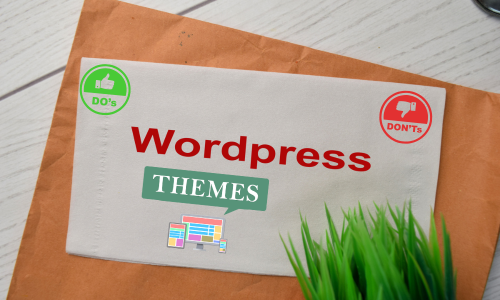Choosing the right WordPress theme is one of the most important steps in creating your website. A great theme can enhance user experience, improve your site’s SEO, and reflect your brand’s personality. In this article, we’ll dive into the key dos and don’ts to help you make the best choice when selecting a WordPress theme.
Understanding Your Needs
Before you even start browsing themes, take a moment to think about what you want your website to achieve. Are you launching a blog, an online store, a portfolio, or a business site? Knowing your website’s purpose will guide your choices and make the process a lot smoother.

Dos When Choosing a WordPress Theme
1. Do Consider Your Website’s Purpose
Your website’s purpose should be the driving force behind your theme selection. For instance, a photography site needs a theme that showcases images beautifully, while an eCommerce store requires a layout optimized for sales. Choose a theme that aligns with what you want to accomplish.
2. Do Check for Responsiveness
With so many users accessing websites on their phones and tablets, it’s crucial to choose a responsive WordPress theme. This ensures your site looks great on all devices, which enhances user experience and helps with your SEO rankings. Google loves mobile-friendly sites
3. Do Look for Customization Options
A good WordPress theme should allow for customization. Look for themes that let you change colors, fonts, layouts, and more, without needing to touch any code. This flexibility lets you create a unique site that truly reflects your brand.
4. Do Prioritize SEO-Friendliness
An SEO-friendly theme can significantly impact your site’s visibility in search engines. Look for themes that follow best practices like clean code, fast loading times, and support for schema markup. Some themes even come with built-in SEO features or work well with popular SEO plugins.
5. Do Review User Feedback and Ratings
Before you settle on a theme, check out user reviews and ratings. Feedback from others can provide valuable insights into the theme’s performance, usability, and support. High ratings and positive comments are usually good signs that you’re on the right track.
Don’ts When Choosing a WordPress Theme

1. Don’t Rush the Selection Process
Choosing a WordPress theme is a big decision that can affect your site for years. Take your time to research, compare options, and test out different themes. Rushing could lead to poor functionality or design issues later on.
2. Don’t Ignore Compatibility Issues
Make sure the WordPress theme you choose is compatible with your version of WordPress and any plugins you plan to use. Incompatibility can cause functionality issues and even security risks, leading to a frustrating user experience.
3. Don’t Overlook Load Speed
Website speed is critical for user experience and SEO. A lightweight theme optimized for speed is essential. Use tools like Google PageSpeed Insights to test potential themes and ensure they won’t slow down your site.
4. Don’t Choose a Theme Based Solely on Aesthetics
While a beautiful design is important, it shouldn’t be your only consideration. Think about functionality, user experience, and how well the theme serves your website’s goals. A gorgeous theme that’s hard to navigate can turn visitors away.
5. Don’t Neglect Support and Updates
Ongoing support and regular updates are key to keeping your WordPress theme functional and secure. Opt for a theme from a reputable developer who offers solid customer support and frequently updates their themes to stay compatible with the latest WordPress versions.

Conclusion
Selecting the right WordPress theme is a foundational step in building a successful website. By following these dos and don’ts, you’ll be well-equipped to make an informed decision that aligns with your goals and enhances your site’s performance. Remember, the right theme will not only improve aesthetics but also boost functionality and user experience.

